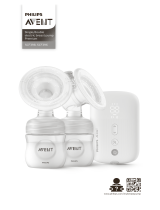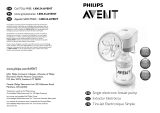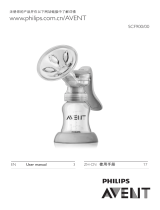
Contents
Introduction __________________________________________________________________________7
General description (Fig. A) ______________________________________________________________ 7
Intended use ________________________________________________________________________ 8
Important safety information ___________________________________________________________ 8
Contraindications _____________________________________________________________________ 8
Warning _____________________________________________________________________________ 8
Caution _____________________________________________________________________________ 9
Preparing for use _____________________________________________________________________10
Cleaning and sanitizing ________________________________________________________________10
Find the best cushion for you ___________________________________________________________ 11
Assembling the breast pump ___________________________________________________________ 12
Using the breast pump ________________________________________________________________ 13
When to express milk _________________________________________________________________ 13
Tips ________________________________________________________________________________ 13
Operating the breast pump _____________________________________________________________ 13
Storing breast milk ____________________________________________________________________ 15
Compatibility ________________________________________________________________________ 15
Feeding _____________________________________________________________________________ 15
For your child‘s safety and health _______________________________________________________ 16
Warning _____________________________________________________________________________ 16
Before rst use _______________________________________________________________________ 16
Cleaning bottles ______________________________________________________________________ 16
Assembling bottles ___________________________________________________________________ 16
Heating breast milk ___________________________________________________________________ 17
Maintenance and storage of bottles _____________________________________________________ 17
Additional information _________________________________________________________________ 17
Choosing the right teat for your baby_____________________________________________________ 17
Replacement ________________________________________________________________________ 18
Batteries ____________________________________________________________________________ 18
Recycling ___________________________________________________________________________ 18
Removing the batteries ________________________________________________________________ 18
Ordering accessories __________________________________________________________________ 19
Accessories __________________________________________________________________________ 19
Storage cups _________________________________________________________________________ 19
Additional items _____________________________________________________________________ 20
Nipple protectors ____________________________________________________________________ 20
Nipple Cream ________________________________________________________________________ 21
Warranty and support _________________________________________________________________ 21
Troubleshooting ______________________________________________________________________ 21
Supplemental information _____________________________________________________________23
Technical information _________________________________________________________________23
EMC information _____________________________________________________________________23
6
English



























